
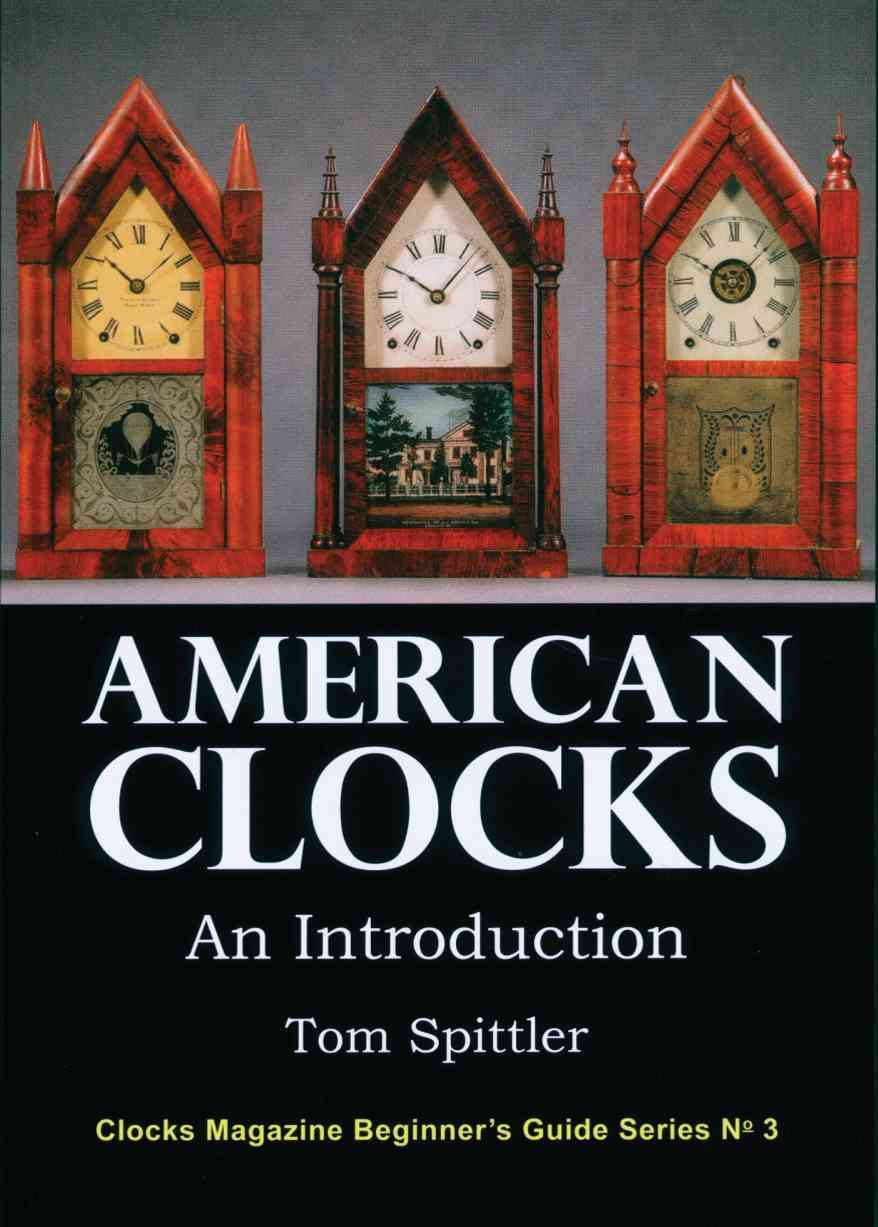



|
|
| from Clocks Magazine, Sepember 2004 | |
The 400-day clockby Mun Chor Weng, SingaporeDownload a pdf of this article Many collectors are curious about the origins of the term ‘400-day clock’. While we have yet to completely document the origin of this term, we have been able to uncover some interesting facts. These clocks are known as ‘year clocks’ in the German-speaking world (‘Jahresuhr’), indicating they could run for one year or longer after winding once. Year running strikers made by R Schnekenburger in 1895 can often be found with an enamel plaque bearing the word ‘Jahresuhr’ affixed to the backboard of the walnut casing, figures 1 to 4. In some cases the plaque is in the shape of a beat plaque located at the bottom of the casing, figure 1. 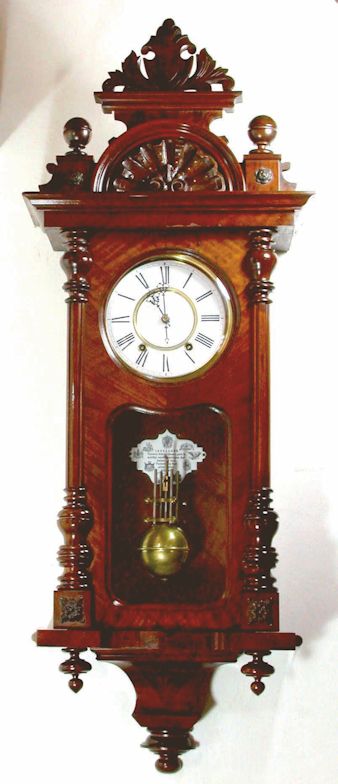
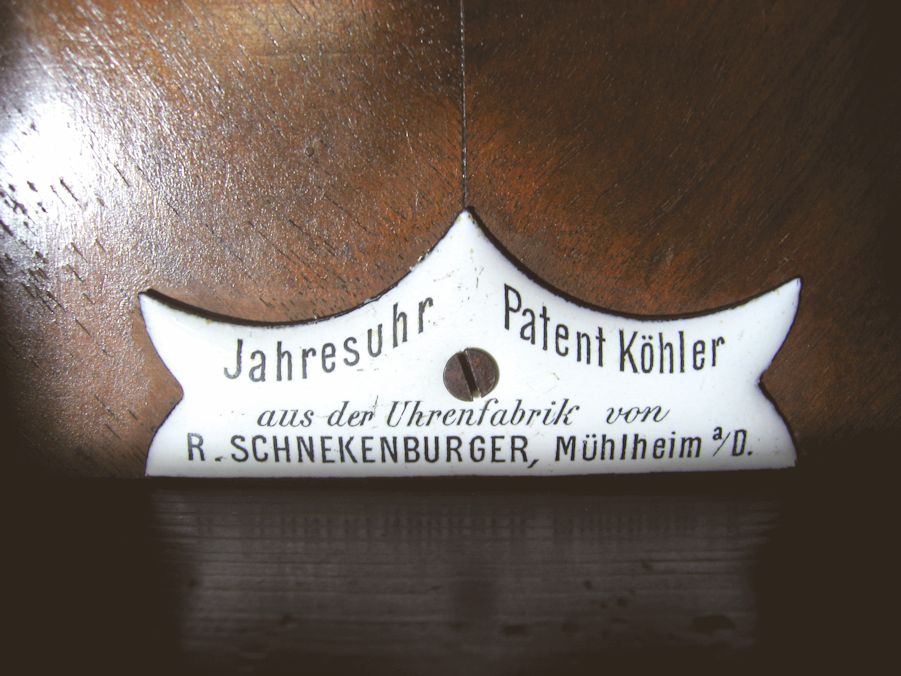
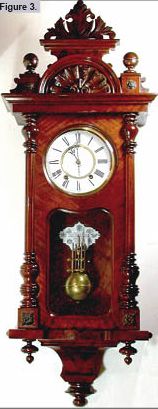
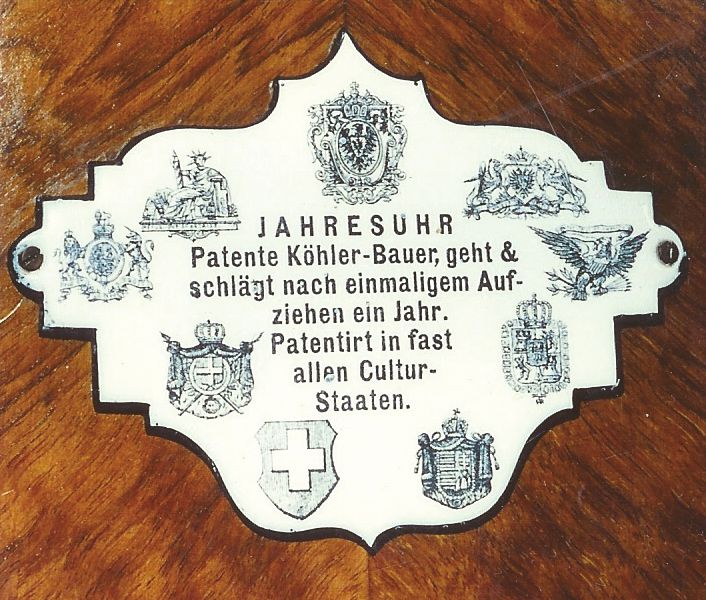
The French, on the other hand, used the term ‘Pendule a 400 jours’ (literally: ‘clock of 400 days’) to describe these clocks, figures 5, 6 and 7. The term was found on the dials of clocks made around 1910 by the French company Claude Grivolas. Mantel clocks fitted with a torsion pendulum that ran for a year or so using only a standard-size spring barrel must have been a technological breakthrough in the 1880s. In fact when The De Gruyter Clock Manufacturing Company submitted a Harder patented torsion pendulum clock to the 1885 International Inventions Exhibition in England, the judges of the Exhibition were sufficiently impressed by it to award a silver medal for that entry for the ‘Application of torsion to the measurement of time’. This may be the only instance of a 400-day clock being awarded a medal in an international exhibition, although more research is needed. 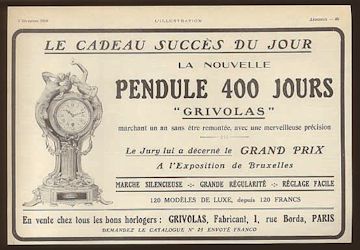
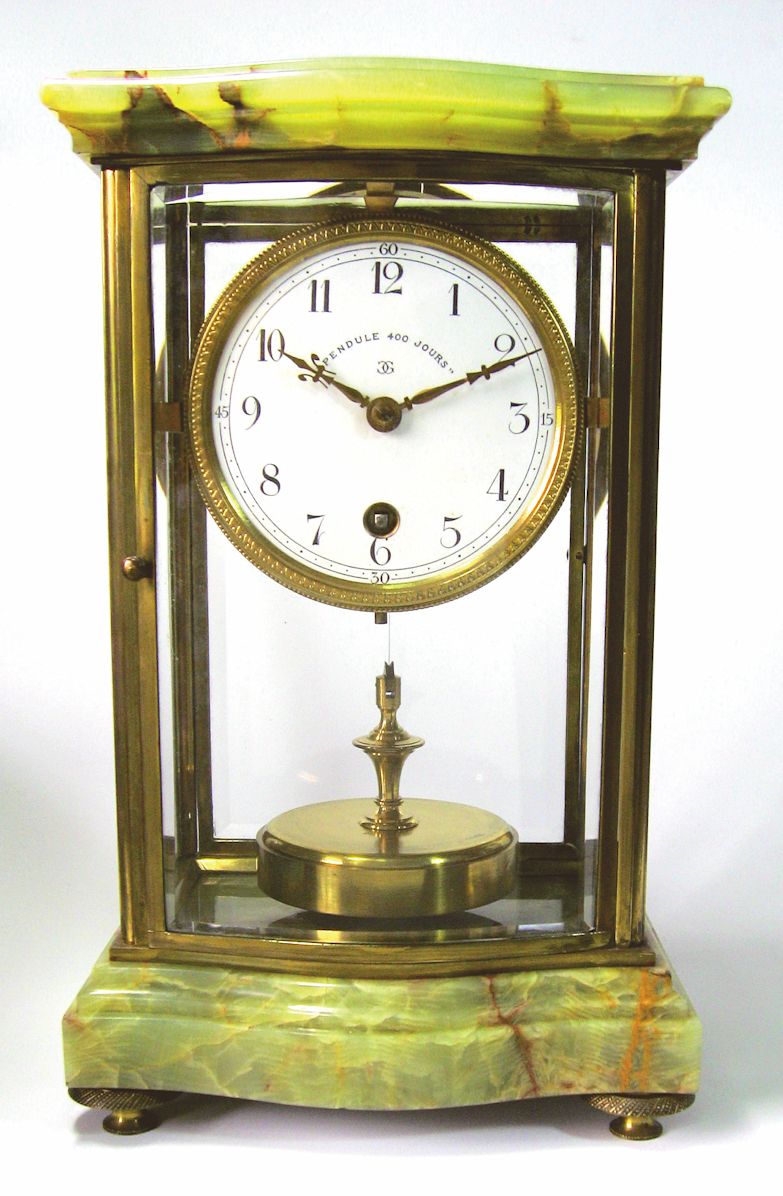

Most of the long-running mantel timepieces produced by other makers at that time were fitted with gravity pendulums and powered by either of the following: 1. A very massive spring barrel, or 2. Multiple spring barrels. To find out how long a fully wound torsion-pendulum 400-day clock could actually run, I tested one, c1908, by Jahresuhrenfabrik, Serial No 57384. A picture of this model can be found in the Horolovar 400-day Clock Repair Guide, 10th edition, plate 1146. This clock was a suitable specimen for such a test: although nearly a century old it had hardly been used by the previous owner—Joseph Meraux—an eccentric and affluent American who spent his entire life assembling a fine collection of about 3000 rare and unusual clocks, many of which were in mint condition. I wound the clock fully, placed it in a secure location and let it run till it stopped. After 415 days, it finally halted, thus justifying the 400-day run-time claim. The ability for a relatively small spring barrel to power a clock for more than 400 days was remarkable. It must have been a compelling ‘unique selling point’ put forth by the manufacturer to market these clocks then they were first introduced in 1882. 
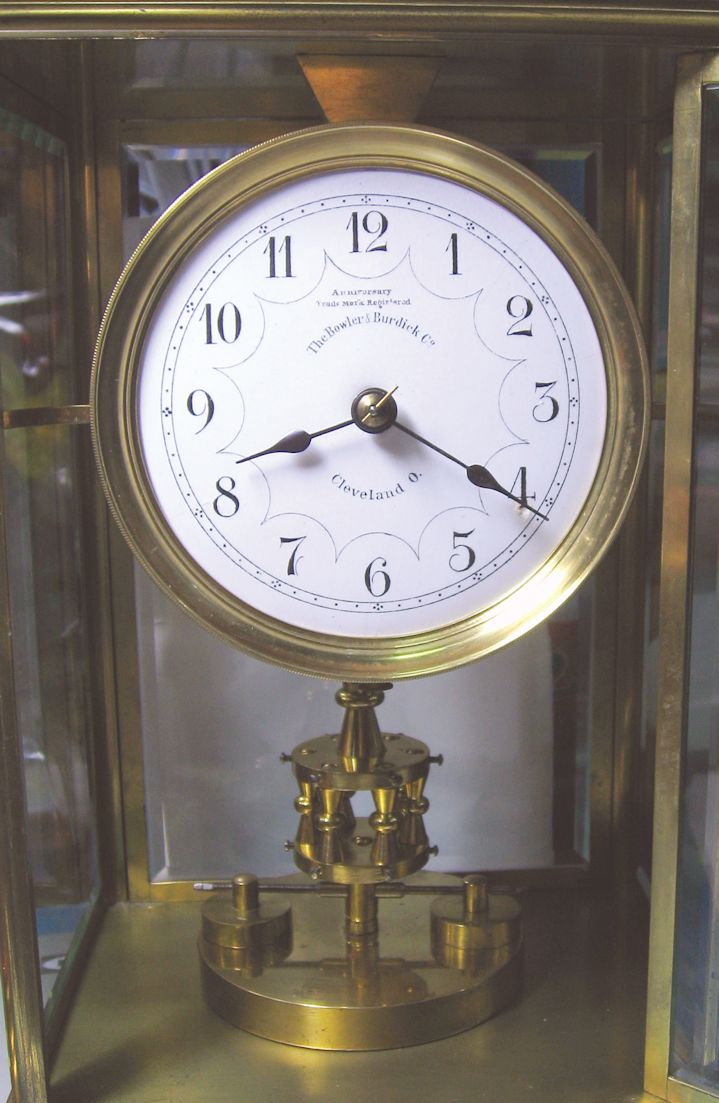
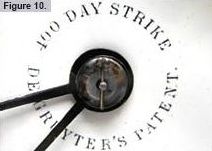
Several references to the 400-day run-time performance, which led to the phrase ‘400-day clock’ as a generic term for these interesting timepieces are noted as follows. 1. In 1883, an advertisement by the New Haven Clock Co appeared in The Jewelers’ Circular and Horological Review featuring the word: ‘Harder’s Torsion-Pendulum Clocks … Run 400 Days’. 2. In 1885, when Jahresuhrenfabrik produced their first ever striking torsion pendulum clock, the dial carried the inscription ‘400 Day Strike De Gruyter’s Patent’, figure 10. (This patent, No 3724, was issued to F A L De Gruyter of Amsterdam on 21st February 1884 by the UK Patent Office.) 3. In 1893, the catalogue of August Schatz (Jahresuhrenfabrik) showed several of these clocks with descriptions in German, French and English. The term ‘400-day clock’ was used in the English version to describe these clocks. Interestingly, in the German description the term ‘Jahres-Uhr’ (‘Year Clock’) was used. 4. In 1897, a full striking torsion pendulum wall clock produced by Schnekenburger has the words ‘400 Days Clock’ written on the dial. 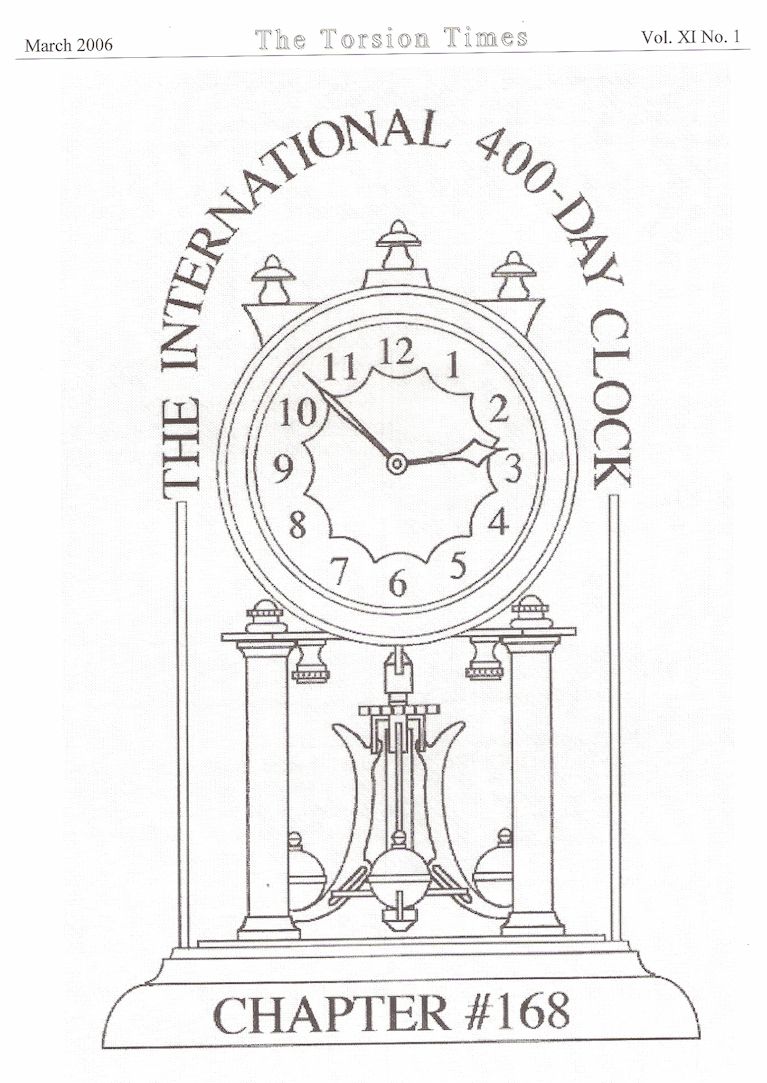
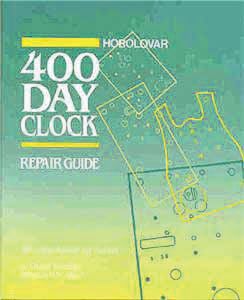

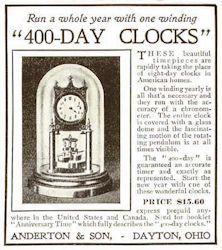
5. Since 1897, the term has been picked up by others, with its common usage referring to these clocks occurring about 1902-1903. For example: 6. In November 1901 the trading company J B Bechtel & Co advertised ‘The Year-Long Clock, Runs 400 Days with one winding’. 7. Some 18 months later, in July 1903, the same company advertised ‘400 Day Clocks’ with the same ‘Year-Long’ trademark. Bowler & Burdick of Cleveland, Ohio, trademarked the word ‘Anniversary’ in reference to these clocks in late 1901, figures 8 and 9. At that time they said their clock ‘Runs 400 Days With One Winding’, and in a 1903 advertisement they referred to 400-Day ‘Anniversary’ clocks. The importer George Kuehl Co advertised their ‘400-Day Clock’ in the Keystone in June 1903 and many advertisements by various companies such as Anderton & Son of Dayton, Ohio, appeared from late 1903 and onward using the term ‘400-Day Clock’, figure 14. In 1954 Charles Terwilliger published The Horolovar Suspension Spring Guide which later was expanded into the Horolovar 400 Day Clock Repair Guide, figure 12. More than 80,000 copies of this very useful manual, now in its 10th edition, have been bought by clock repairers as well as clock collectors over the last 50 years or so. With the publication of this repair guide the use of the term ‘400-day clock’ is now firmly entrenched in the clock trade as well as in horological publications such as Clocks, the Bulletin of the National Association of Watch and Clock Collectors (NAWCC) and the Torsion Times, official journal of the International 400 Day Clock Chapter 168 of the NAWCC, figure 11. Download a pdf of this article © 1977 to 2015 Clocks Magazine & Splat Publishing Ltd | |